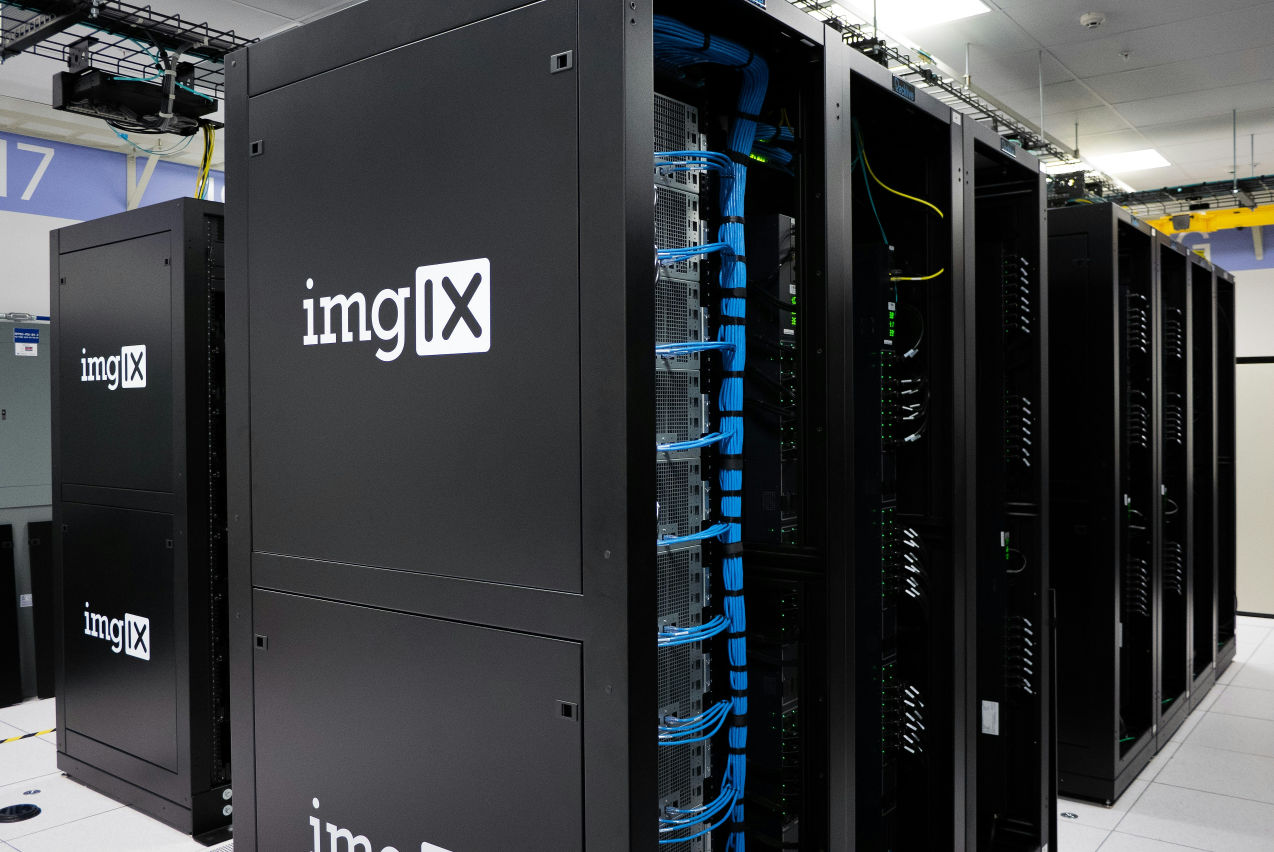Exploring Managed Cloud Services: A Comprehensive Guide

What are Managed Cloud Services?
Cloud computing has revolutionized the way businesses operate, offering scalability, flexibility, and cost-efficiency. Managed Cloud Services have emerged as a critical component in leveraging cloud technology to its full potential. In this comprehensive guide, we'll explore the facets of Managed Cloud Services, their benefits for businesses, and how to choose the right provider to empower your organization's cloud journey.
Introduction to Managed Cloud Services
In today's digital age, businesses are increasingly turning to cloud technologies to drive efficiency, agility, and innovation. Managed Cloud Services have emerged as a pivotal solution for organizations looking to harness the power of the cloud without diverting focus from their core operations.
Definition and Scope of Managed Cloud Services
Managed Cloud Services refers to outsourcing cloud management responsibilities to external experts. This includes a comprehensive suite of services such as deployment, maintenance, monitoring, optimization, and support of cloud resources. Managed Cloud Services extend beyond mere infrastructure management, encompassing strategic business alignment, ensuring that the cloud infrastructure scales harmoniously with the organization's goals and needs. This approach allows businesses to leverage cloud technologies to their fullest potential while mitigating the complexity and resource requirements of managing cloud environments in-house.
The Evolution of Managed Cloud Services in the IT Landscape
The evolution of Managed Cloud Services is a testament to the dynamic nature of the IT industry. Initially, businesses managed their IT infrastructures on-premises, facing challenges related to scalability, cost, and agility. As cloud computing emerged, organizations began to shift their infrastructures to the cloud, attracted by its promises of flexibility, scalability, and cost-efficiency. However, the complexity of managing cloud environments soon became apparent, giving rise to Managed Cloud Services.
Managed Cloud Services have grown from basic infrastructure management to comprehensive solutions that cover every aspect of cloud computing. These services have evolved to include advanced analytics, artificial intelligence, cybersecurity, and customized applications, reflecting the growing sophistication and critical nature of cloud technologies in business operations.

Importance and Benefits of Managed Cloud Services
Managed Cloud Services have become indispensable in the modern IT landscape for several reasons:
- Expertise: They provide access to a team of experts who are well-versed in the latest cloud technologies and best practices, ensuring that businesses can fully leverage the cloud's potential without needing to invest heavily in training or hiring specialists.
- Focus on Core Business: By outsourcing cloud management, organizations can concentrate on their core competencies, driving innovation and growth without being bogged down by the complexities of cloud operations.
- Cost Efficiency: Managed Cloud Services help businesses optimize their cloud spending by ensuring that resources are used efficiently and scaling services to match demand, thus avoiding overprovisioning and underutilization.
- Enhanced Security and Compliance: With cybersecurity threats on the rise, Managed Cloud Services providers invest in advanced security measures to protect data and ensure compliance with regulatory standards, offering peace of mind to businesses.
- Scalability and Flexibility: Businesses can quickly scale their cloud resources up or down as their needs evolve, allowing for agility in response to market changes or business opportunities.
- Innovation: Managed Cloud Services providers continuously integrate the latest technologies and innovations into their offerings, enabling businesses to benefit from cutting-edge cloud solutions without the need for constant internal upgrades or training.
Important Aspects of Managed Cloud Services
Managed Cloud Services encompass a range of critical components that ensure the smooth operation, security, and efficiency of cloud resources. Two fundamental aspects are Cloud Infrastructure and Cloud Operations, each playing a vital role in the managed services ecosystem.
Cloud Infrastructure
Cloud Infrastructure is the backbone of Managed Cloud Services, encompassing the hardware, software, networks, and facilities that support the storage, processing, and management of data in the cloud. This infrastructure is designed to provide high availability, scalability, and flexibility, enabling businesses to leverage cloud computing's full potential without investing in physical hardware.
Components of Cloud Infrastructure include:
- Compute Resources: Virtual machines and serverless computing options that provide processing power to run applications and services.
- Storage Solutions: Diverse storage options, including object, block, and file storage, cater to different data storage requirements, ensuring data availability and durability.
- Networking: Virtual networks, VPNs, and dedicated connections that facilitate secure and efficient data transfer and communication within the cloud environment.
- Databases: Managed database services that offer scalability, high availability, and automated backup and recovery processes.
Managed Cloud Services providers oversee these infrastructure components' deployment, management, and optimization, ensuring they align with the business's needs and objectives.
Cloud Operations
Cloud Operations, or CloudOps, is a set of processes and practices that ensure the effective and efficient operation of cloud services. It involves the continuous monitoring, management, and optimization of cloud environments to achieve optimal performance, cost-efficiency, and reliability.
Key aspects of Cloud Operations include:
- Monitoring and Management: Continuous monitoring of cloud resources to ensure performance, detect anomalies, and respond to incidents promptly. This includes managing resource allocation, scaling services, and ensuring that the cloud environment meets the required service levels.
- Cost Optimization: Analyzing and optimizing cloud spending to ensure that resources are utilized efficiently, identifying underused or unnecessary resources, and leveraging reserved instances or savings plans.
- Security and Compliance: Implementing and maintaining robust security measures, including identity and access management, data encryption, and compliance with industry regulations and standards.
- Automation and Orchestration: Automating routine operational tasks and orchestrating complex workflows to increase efficiency, reduce the potential for human error, and accelerate response times to changes or incidents.
Security and Compliance
In the cloud, security and compliance are paramount, given the increasing number and sophistication of cybersecurity threats, as well as the growing complexity of regulatory requirements. Managed Cloud Services address these concerns through a comprehensive approach that includes:
- Data Protection: Implementing robust encryption methods for data at rest and in transit, ensuring that sensitive information is shielded from unauthorized access.
- Access Control: Utilizing identity and access management (IAM) solutions to define and enforce who can access what resources in the cloud, thereby minimizing the risk of insider threats and data breaches.
- Threat Detection and Response: Advanced monitoring tools and techniques are employed to detect unusual activities or potential security threats, enabling rapid response to mitigate risks.
- Compliance Management: Ensuring that cloud services comply with relevant industry regulations and standards, such as GDPR, HIPAA, or PCI DSS, through regular audits, compliance checks, and adherence to best practices.
- Security Best Practices: Implementing firewalls, intrusion detection systems, and other security measures, along with regular security assessments and training to maintain a strong security posture.
By focusing on these areas, Managed Cloud Services providers help organizations navigate the complexities of cloud security and compliance, ensuring that their data and resources are protected in a constantly evolving threat landscape.
Disaster Recovery
Disaster Recovery (DR) in the context of Managed Cloud Services involves strategies and processes to quickly recover data and resume business operations in the event of a disaster. This aspect is crucial for minimizing downtime and mitigating the impact of unexpected events, such as natural disasters, cyber-attacks, or technical failures.
Components of Disaster Recovery include:
- Data Backup: Regularly backing up data to secure and geographically distributed locations to ensure that it can be restored in case of loss or corruption.
- DR Planning: Developing a comprehensive disaster recovery plan that outlines procedures for data recovery and system restoration, ensuring that all stakeholders understand their roles during a disaster.
- Automation: Automating DR processes to speed up recovery times and reduce the potential for human error, ensuring that systems can be quickly brought back online.
- Testing and Validation: Regularly testing DR plans to ensure they are effective and can be executed as designed, allowing for adjustments and improvements based on test outcomes.
- High Availability: Designing systems and applications for high availability, including the use of failover mechanisms and redundant systems, to reduce the risk of significant downtime.
Common Types of Managed Cloud Services Platforms
Managed Cloud Services offer a spectrum of platforms designed to cater to the diverse needs of businesses, enabling them to harness the cloud's power for various applications, from infrastructure management to software delivery. Among the key platforms are Infrastructure as a Service (IaaS), Platform as a Service (PaaS), Software as a Service (SaaS), Backup as a Service (BMaaS), and Storage as a Service (StaaS), each serving distinct functions in the cloud ecosystem.

IaaS (Infrastructure as a Service)
IaaS, or Infrastructure as a Service, offers a virtualized computing infrastructure managed over the Internet. This service model provides businesses with fundamental computing resources such as virtual servers, storage, and networks, allowing them to avoid the capital expense and complexity of buying and managing their physical servers and data center infrastructure. Clients retain control over operating systems, storage, deployed applications, and certain networking components (like firewalls and host configurations), enabling a high degree of flexibility and scalability.
PaaS (Platform as a Service)
PaaS, or Platform as a Service, takes a step further by providing all the infrastructure benefits of IaaS along with additional tools and services to streamline and enhance the development of applications. PaaS delivers a framework for developers that they can build upon and use to create customized applications. The enterprise can manage all servers, storage, and networking or a third-party provider, while developers can maintain management of the applications. This platform is particularly beneficial for developers who want to build applications without worrying about underlying infrastructure, as it provides a managed and pre-configured environment where they can focus on the coding and deployment of their software.
SaaS (Software as a Service)
SaaS stands out as a pivotal service model in cloud computing, where applications are hosted remotely by a service provider and made available to users over the internet. This model eliminates the need for organizations to install, update, or maintain software locally, offering a seamless and scalable solution for accessing and using software applications. SaaS applications range from email and communication tools to complex enterprise resource planning (ERP) systems, enabling businesses to leverage advanced software solutions without significant upfront investment in infrastructure or software licenses.
BMaaS (Backup as a Service)
In an era where data is a critical asset, BMaaS offers a specialized service focusing on remote, cloud-based data backup. This service is crucial for businesses seeking to ensure data durability and resilience against data loss due to hardware failures, cyber threats, or disasters. BMaaS providers manage the end-to-end process of data backup and restoration, offering businesses peace of mind that their data is securely stored and easily recoverable in the event of data loss incidents.
StaaS (Storage as a Service)
StaaS provides businesses with scalable and flexible cloud-based storage solutions, allowing them to store, manage, and access data without the complexities of managing on-premises storage infrastructure. This service model offers cost efficiency, as organizations can typically pay only for the storage they use, with the ability to scale up or down based on their changing needs. StaaS is integral for businesses dealing with large volumes of data, offering secure and accessible storage options that support a wide array of data types and use cases.
Benefits of Managed Cloud Services for Businesses
Managed Cloud Services bring a host of advantages to businesses, notably in reducing operational and security risks, which are crucial for maintaining the integrity and efficiency of business processes in the digital landscape.

Reducing Operational Risks
Managed Cloud Services significantly reduce operational risks by ensuring that cloud environments are optimally managed and monitored. By outsourcing cloud management to experts, businesses can avoid the pitfalls associated with insufficient expertise or resources. These services provide proactive monitoring, automatic updates, and management of the cloud infrastructure, ensuring high availability, performance, and business continuity. This level of management helps identify and mitigate risks before they escalate, reduce downtime, and maintain consistent service delivery. Additionally, the scalability and flexibility offered by managed services providers allow businesses to adapt quickly to market changes or operational demands, further minimizing operational vulnerabilities.
Reducing Security Risks
Security is a paramount concern in the cloud, and Managed Cloud Services play a vital role in bolstering the security posture of businesses. These services encompass comprehensive security measures, including regular security assessments, threat monitoring, and incident response protocols, which safeguard sensitive data and applications from both external and internal threats. Managed service providers implement robust security frameworks that adhere to industry best practices and regulatory standards, ensuring that the business's cloud environment is resilient against cyber threats. Moreover, with continuous monitoring and the application of the latest security updates and patches, managed cloud services mitigate the risk of vulnerabilities and data breaches, providing businesses with peace of mind and allowing them to focus on their core activities.
Value Added Services
Managed Cloud Services extend beyond mere infrastructure management; they encompass a suite of value-added services that can significantly enhance business operations. These services might include advanced analytics, bespoke application development, cybersecurity enhancements, and compliance management. By accessing these specialized services, businesses can leverage the latest technological innovations and industry best practices, fostering innovation and staying competitive in their respective markets. Moreover, these value-added services can provide deeper insights into business operations, enabling data-driven decision-making and strategic planning.
No Need for In-House Resource (But a Manager)
One of the key advantages of Managed Cloud Services is the reduction in the necessity for comprehensive in-house IT teams. Businesses can rely on external experts for the day-to-day management of their cloud infrastructure, freeing up their internal resources to focus on core business activities and strategic initiatives. However, it's beneficial to have a manager or a liaison in place who can coordinate with the managed service provider, ensure that the services align with business goals, and facilitate effective communication between the provider and the business. This approach ensures that while the operational workload is reduced, there's still strategic oversight and alignment with the company's objectives.
Cost Efficiency and Resource Optimization
Managed Cloud Services contribute to cost efficiency by optimizing the use of resources. Instead of making significant capital investments in hardware and infrastructure, businesses can adopt a pay-as-you-go model, paying only for the resources they consume. This flexibility allows companies to scale their resources up or down based on demand, preventing overprovisioning and underutilization. Additionally, managed service providers often have the expertise to optimize resource usage effectively, ensuring that businesses are not only saving costs but also getting the most out of their cloud investments. This strategic resource management can lead to substantial long-term savings and improved operational efficiency.
Enhancing Business Agility and Scalability
The agility and scalability offered by Managed Cloud Services are invaluable for businesses aiming to adapt quickly to market changes or evolving customer needs. Managed cloud environments allow organizations to scale their IT resources up or down with ease without the need for substantial upfront investments in hardware. This flexibility enables businesses to respond swiftly to opportunities or challenges, such as sudden spikes in demand or the need to launch new applications or services. By leveraging managed cloud services, businesses can achieve a level of agility that would be challenging to attain with traditional on-premises IT infrastructures, allowing them to stay competitive and responsive in their respective industries.
Cloud Computing Accelerates Time-to-Market
One of the standout advantages of cloud computing, particularly when coupled with managed services, is the acceleration of time-to-market for products and services. Managed Cloud Services streamline the development, testing, and deployment processes, enabling businesses to bring their offerings to market more quickly. This acceleration is achieved through rapid provisioning of resources, automated workflows, and continuous integration and deployment practices, all of which reduce the lead time from development to deployment. By minimizing these timeframes, businesses can capitalize on market opportunities more effectively and maintain a competitive edge, ensuring that they can meet and exceed customer expectations in a timely manner.
Major Managed Cloud Service Platform Providers
In the domain of Managed Cloud Services, several key players stand out, offering robust platforms that cater to a diverse range of business needs. Among these, Google Cloud is a prominent provider, renowned for its comprehensive suite of services and innovative solutions.
Service Platform Provider Selection
Choosing the right managed cloud service provider is a critical decision for businesses, as it can significantly impact their cloud strategy and operations. When selecting a provider, businesses should consider factors such as the provider's industry reputation, the breadth and depth of their service offerings, compliance and security standards, support and service level agreements (SLAs), and the ability to scale services in alignment with business growth. Assessing these criteria helps ensure that the selected provider can meet the specific needs and objectives of the business, offering a partnership that fosters technological advancement and operational excellence.

Google Cloud
Google Cloud offers a wide array of services that include computing, storage, networking, big data, machine learning, and IoT, tailored to meet diverse business requirements. It's known for its strong data analytics and machine learning tools, extensive global infrastructure, robust security measures, and commitment to sustainability. Google Cloud's offerings are designed to support businesses in scaling efficiently, fostering innovation, and enhancing operational agility.
Microsoft Azure
Microsoft Azure is another major player, providing a vast range of cloud services that support various languages, tools, and frameworks, including both Microsoft-specific and third-party software and systems. Azure's integration with Microsoft's software offerings, like Office 365 and Windows, makes it a preferred choice for businesses deeply embedded in the Microsoft ecosystem. It offers solutions for AI, machine learning, IoT, and more, with a strong emphasis on hybrid cloud capabilities, allowing businesses to integrate their on-premises infrastructure with the cloud seamlessly.
AWS Managed Services
Amazon Web Services (AWS) is considered a pioneer in the cloud industry, offering an extensive set of services that include computing power, storage options, and networking capabilities, among others. AWS Managed Services further simplifies cloud adoption by handling the day-to-day management of AWS cloud infrastructure, allowing businesses to focus on their core activities. AWS is renowned for its scalability, security, and innovation, providing a robust platform for businesses of all sizes and industries to build and expand their cloud-based solutions.
VMware Cloud
VMware Cloud offers a distinct approach by focusing on virtualization and allowing businesses to run, manage, connect, and secure applications across clouds and devices in a common operating environment. This provides flexibility for businesses looking to maintain and extend their use of virtualized infrastructure, facilitating a smooth transition to the cloud or enabling hybrid cloud environments. VMware's solutions are particularly appealing to organizations looking to leverage existing investments in VMware technology while adopting cloud capabilities.
Difference between Co-Location and Managed Cloud Services
Understanding the distinction between Co-Location (Co-Lo) services and Managed Cloud Services is essential for businesses to make informed decisions about their IT infrastructure and cloud strategy. While both services provide infrastructure solutions, they cater to different needs and operational models.
Co-Location (Co-Lo) Services
Co-Location, or Co-Lo, refers to the practice of renting space for servers and other computing hardware at a third-party provider's data center. In this model, businesses own the physical servers and networking equipment but house them in the Co-Lo provider's facility. The Co-Lo provider offers the physical space, power, cooling, physical security, and connectivity to the Internet, while the business maintains full control over the hardware and software.
Characteristics of Co-Location include:
- Physical Infrastructure: Businesses can leverage the advanced infrastructure of Co-Lo facilities without the capital expenditure required to build and maintain their own data center.
- Control: While the hardware is housed off-site, businesses retain complete control over their servers and network equipment, including their configuration, maintenance, and the software they run.
- Scalability: Co-Lo offers some level of scalability, as businesses can rent additional space or resources as needed, though this is generally less flexible than cloud services.
Managed Cloud Services
Managed Cloud Services, on the other hand, involves outsourcing cloud computing and management to a third-party provider. These services cover a wide range of functions, including infrastructure management, software updates, security, and support. The service provider manages and maintains the cloud infrastructure, allowing businesses to focus on their core operations without worrying about the underlying technology.
Characteristics of Managed Cloud Services include:
- Hands-Off Operation: Businesses don't need to manage the day-to-day maintenance or updates of their cloud infrastructure, as these aspects are handled by the service provider.
- Scalability and Flexibility: Cloud services offer significant scalability and flexibility, allowing businesses to easily adjust their resource usage based on current needs without worrying about physical hardware limitations.
- Cost-Effectiveness: With a pay-as-you-go model, businesses only pay for the resources they use, which can lead to cost savings compared to maintaining an in-house data center or Co-Lo setup.
Key Differences between Co-Lo and MCS
The primary difference lies in the ownership and management of the infrastructure. In Co-Lo, businesses own the hardware but rent the physical space and related services, maintaining control over their equipment. In contrast, Managed Cloud Services involve leasing both the infrastructure and management services from a provider, offering businesses a hands-off approach to their IT needs.
While Co-Lo can be suitable for businesses that require physical control over their servers with the benefits of a professional data center, Managed Cloud Services offer a more flexible and scalable solution that is ideal for businesses looking to leverage the cloud's full potential without the complexities of managing the infrastructure themselves.
Selecting the Right Managed Cloud Service Provider
Choosing the right Managed Cloud Service Provider is crucial for businesses to ensure they receive the quality of service and support needed to leverage cloud technology effectively. This selection process involves evaluating various criteria, understanding service level agreements (SLAs), and comprehending the division of security responsibilities between the business and the provider.
Criteria for Choosing a Managed Cloud Service Provider
When selecting a Managed Cloud Service Provider, businesses should consider several key criteria to ensure a compatible and effective partnership:

- Expertise and Experience: Look for providers with a proven track record and expertise in your industry or with your specific cloud requirements.
- Range of Services: Ensure the provider offers the range of services you need, from infrastructure management to specific applications and security services.
- Compliance and Security: The provider should have robust security measures in place and be able to demonstrate compliance with relevant industry standards and regulations.
- Support and Responsiveness: Evaluate the provider's support structure, including availability, responsiveness, and the quality of customer service.
- Customization and Scalability: The provider should offer flexible and scalable solutions that can be tailored to meet your business's changing needs.
- Reputation and Reliability: Consider the provider's reputation in the market, customer testimonials, and case studies to gauge their reliability and performance.
Evaluating Service Level Agreements (SLAs)
Service Level Agreements (SLAs) are critical documents that define the level of service you can expect from your provider, including:
- Availability and Uptime: SLAs should specify the guaranteed uptime, how it's measured, and the compensation for not meeting the agreed-upon uptime.
- Support and Response Times: Understand the provider's commitment to support response times and resolution times for different types of issues.
- Performance Metrics: Ensure the SLA includes specific performance benchmarks and the remedies if these benchmarks are not met.
- Data Management and Security: The SLA should outline how data is managed, backed up, and protected, including details on data sovereignty and compliance with data protection regulations.
Cloud Managed Services and Security Responsibility
When businesses engage with Cloud Managed Services, it's crucial to understand that while the service provider takes on many aspects of managing and securing the cloud infrastructure, the ultimate responsibility for certain security elements still resides with the business. This delineation is often outlined in the shared responsibility model, which is fundamental to cloud services.
In the context of Cloud Managed Services, the provider is typically responsible for securing the underlying infrastructure, including data centers, networks, servers, and storage units. They ensure that the cloud environment is robust against threats and is compliant with industry standards and regulations. This includes managing physical security, server hardware integrity, network infrastructure security, and the foundational aspects of operating systems and virtualization layers.
However, businesses retain responsibility for securing their data within the cloud. This includes several key aspects:
- Data Security: Businesses must implement measures to protect their data, including encryption, access controls, and data classification protocols.
- Identity and Access Management: Companies are responsible for managing who has access to their cloud resources and ensuring that adequate authentication and authorization mechanisms are in place.
- Application Security: Businesses need to secure their applications deployed in the cloud, ensuring they are developed, tested, and maintained in line with security best practices.
- Compliance: While managed service providers can assist in achieving compliance, businesses are ultimately responsible for ensuring that their cloud usage complies with relevant laws, regulations, and industry standards.
- End-User Training: Businesses should educate their employees on security best practices, potential threats, and safe usage of cloud resources to mitigate risks stemming from human error.
It's essential for businesses to actively engage in understanding and implementing their part of the security responsibility. This includes selecting managed cloud services that offer transparency, robust security features, and support that aligns with the business's security objectives. By working collaboratively with their managed service provider and maintaining a clear understanding of their responsibilities, businesses can fortify their cloud environments against threats while leveraging the full spectrum of benefits offered by cloud computing.
Best Practices in Managed Cloud Services
To maximize the benefits of Managed Cloud Services and ensure a secure, resilient, and efficient cloud environment, businesses should adhere to several best practices, particularly concerning data management, business continuity, and security.
Data Management and Backup Strategies
Effective data management and backup strategies are crucial in Managed Cloud Services to safeguard against data loss and ensure data availability. Best practices include implementing regular and automated data backups ensuring backups are stored in geographically diverse locations to protect against regional failures. Data should be encrypted both in transit and at rest to maintain confidentiality and integrity. Additionally, businesses should adopt data lifecycle management policies to classify, store, and dispose of data in a manner that optimizes costs and complies with regulatory requirements.
Ensuring Business Continuity and Disaster Recovery
Business continuity and disaster recovery (BCDR) are essential components of Managed Cloud Services, designed to minimize downtime and maintain operational resilience in the face of disruptions. To ensure robust BCDR, businesses should develop and document comprehensive disaster recovery plans that include clear recovery objectives and procedures. Regular testing of these plans is vital to ensure they are effective and can be executed swiftly when needed. Leveraging the cloud's scalability, businesses can implement redundant systems and failover mechanisms to facilitate quick recovery and continuous operation, even during unforeseen events.
Security and Compliance Measures
Maintaining stringent security and compliance measures is paramount in Managed Cloud Services to protect against threats and meet regulatory standards. Businesses should collaborate with their service provider to implement a robust security framework that includes network security controls, identity and access management, threat detection, and incident response capabilities. Compliance with industry standards and regulations can be achieved through regular audits, adherence to best practices, and using compliance management tools provided by the cloud service. It's also important for businesses to stay informed about evolving security threats and compliance requirements, adapting their strategies to maintain a secure and compliant cloud environment.
Optimization and Cost Management
Optimizing resource utilization and managing costs are vital in the cloud environment to ensure businesses only pay for what they need and use. Regularly monitoring and analyzing cloud usage helps identify underutilized resources that can be downscaled or eliminated, thereby reducing waste. Adopting auto-scaling features ensures that resources scale based on demand, enhancing efficiency. Businesses should also consider different pricing models, such as reserved instances for predictable workloads, to capitalize on cost savings. Implementing budget alerts and establishing governance policies are additional strategies to maintain control over cloud spending.
Choosing the Right Service Model
Selecting the right cloud service model (IaaS, PaaS, SaaS, or others) is pivotal, as it should align with the business's operational needs and technical capabilities. IaaS offers extensive control over the infrastructure but requires more management, which might be suitable for businesses with specific customization needs. PaaS provides a platform for developers, removing the need to manage the underlying infrastructure, ideal for organizations focusing on development and innovation. SaaS delivers complete applications managed by the provider, suitable for businesses looking for ready-to-use solutions. Understanding these models helps businesses choose the most appropriate one that aligns with their objectives and resource capabilities.
Effective Communication and Collaboration
Clear communication and effective collaboration between the business and the managed cloud service provider are essential for the success of cloud initiatives. Regularly scheduled meetings, clear channels of communication, and established protocols for issue resolution ensure that both parties are aligned and can address concerns promptly. Businesses should actively engage with providers, sharing their strategic goals, performance expectations, and feedback. This collaboration fosters a partnership where the provider can offer tailored advice, proactive support, and innovative solutions that align with the business's evolving needs.
How RedZone Technologies Can Help
RedZone Technologies stands out in the realm of Managed Cloud Services by offering a distinctive and effective approach, leveraging key partnerships, and providing a suite of featured solutions designed to meet the diverse needs of businesses transitioning to or optimizing their cloud environments.
Explore the options at RedZone Products Featuring a selection of security products tailored to address specific challenges in safeguarding digital assets.

Our Approach to Cloud-Managed Services
RedZone Technologies adopts a holistic and client-centric approach to Cloud-Managed Services, emphasizing a deep understanding of each client's unique business needs and objectives. This approach involves a thorough assessment of the client's current IT infrastructure, identifying areas where cloud services can offer the most significant benefits. RedZone's strategy is rooted in aligning cloud services with business goals, ensuring that the cloud solutions implemented not only enhance operational efficiency but also drive business growth and innovation. Our Managed IT Support is perfect for migrating to the cloud and managing cloud infrastructure, optimizing performance, and reducing costs.The company focuses on creating tailored solutions that provide scalability, security, and cost-efficiency, backed by comprehensive support and expert guidance throughout the cloud journey.
Key Partnerships
Recognizing the importance of robust and versatile cloud solutions, RedZone Technologies has established key partnerships with leading cloud service providers. These collaborations enable RedZone to offer a wide range of top-tier cloud services and solutions, ensuring clients have access to the latest technologies and best practices in the industry. By leveraging these partnerships, RedZone can provide a diverse array of cloud options, from infrastructure as a service (IaaS) to platform as a service (PaaS) and software as a service (SaaS), ensuring clients receive the most suitable and effective cloud solutions for their specific needs.
Featured Solutions
RedZone Technologies offers a comprehensive suite of cloud-managed solutions that cater to various aspects of cloud computing, including cloud migration, infrastructure management, security, and compliance. These featured solutions are designed to address the key challenges businesses face in the cloud, providing:
- Virtual Security Operations: Our Virtual Security Operations offers expertly managed security services that monitor and protect your digital environment around the clock.
- Cloud Migration Services: Expert assistance in planning and executing a seamless transition to the cloud, minimizing downtime, and ensuring data integrity.
- Cloud Security and Compliance: Advanced solutions to protect data and applications in the cloud, ensuring adherence to regulatory standards and best practices in cybersecurity.
- Performance Optimization: Continuous monitoring and optimization of cloud resources to ensure optimal performance, efficiency, and cost-effectiveness.
- Disaster Recovery and Business Continuity: Robust strategies and solutions to ensure businesses can quickly recover from disruptions and maintain continuous operations.
- IT Security Assessment and Professional Services: A thorough evaluation of your cloud security posture to identify vulnerabilities and implement strategic improvements. Discover how our Cybersecurity Risk Assessment can help you keep safe and secure from potential upcoming risks.
By offering a blend of strategic insight, technical expertise, and comprehensive solutions, RedZone Technologies empowers businesses to harness the full potential of cloud computing, enhancing their agility, competitiveness, and innovation in the digital landscape.
Conclusion
Managed Cloud Services represent a transformative shift in how businesses approach IT infrastructure, offering a blend of scalability, flexibility, and efficiency that traditional systems struggle to match. By understanding the various aspects, types, and benefits of Managed Cloud Services, businesses can make informed decisions that align with their strategic objectives, operational needs, and budgetary constraints.
Adopting Managed Cloud Services can significantly reduce operational and security risks, enhance business agility, and provide access to a suite of value-added services that drive innovation and growth. Key to leveraging these benefits is selecting the right service provider, one that not only offers the technical expertise and solutions you need but also aligns with your business's core values and objectives.
RedZone Technologies emerges as a strategic partner in this landscape, offering tailored cloud-managed services that are grounded in a deep understanding of client needs, supported by robust partnerships, and highlighted by a comprehensive suite of solutions. Whether it's optimizing your cloud operations, enhancing your data management strategies, ensuring business continuity, or maintaining stringent security and compliance standards, RedZone Technologies is equipped to guide and support businesses through their cloud journey.
Our extensive Resources library provides valuable insights and guidance on maintaining a resilient cybersecurity posture. For more information on securing your organization's future with proactive cybersecurity measures, Contact us today.
What are the most common challenges businesses face when adopting managed cloud services?
When adopting managed cloud services, businesses often encounter several challenges. One primary challenge is the complexity of cloud migration, which involves moving data, applications, and processes to the cloud while minimizing disruption to operations. Ensuring data security and compliance in the new cloud environment is another significant concern, particularly for industries subject to strict regulatory requirements. Businesses also face the task of selecting the right cloud service provider, one that aligns with their specific needs and can offer the necessary support and expertise. Additionally, there's the challenge of managing and integrating existing legacy systems with cloud services, which can be complex and require careful planning. Finally, cultivating a cloud-ready culture within the organization is crucial, as employees need to adapt to new tools and processes associated with cloud computing.
What are the cost implications of switching to managed cloud services from an in-house IT infrastructure?
Switching to managed cloud services from an in-house IT infrastructure can have several cost implications. Initially, there may be upfront costs associated with migrating to the cloud, such as data transfer fees, the cost of new software licenses, and potential consultancy fees. However, over time, managed cloud services can offer significant cost savings. These savings come from reduced expenditures on hardware, as there's no need to purchase and maintain physical servers and data centers. Operational costs can also decrease since the cloud service provider manages maintenance, upgrades, and support. Additionally, the pay-as-you-go pricing model of cloud services ensures that businesses only pay for the resources they use, offering scalability and cost-efficiency. It's important for businesses to conduct a thorough cost-benefit analysis, considering both short-term and long-term financial impacts, to fully understand the cost implications of transitioning to managed cloud services.
How do managed cloud services adapt to the specific needs of different industries?
Managed cloud services are highly adaptable, designed to meet the unique requirements and challenges of various industries. Service providers tailor their offerings by understanding the specific operational, regulatory, and technological landscapes of each sector. For example, in healthcare, providers ensure compliance with HIPAA regulations, offering secure data management and storage solutions. For the financial sector, emphasis is placed on data security and compliance with financial regulations. Retail businesses benefit from scalable solutions to handle fluctuating demand, especially during peak shopping seasons. Additionally, managed cloud services offer industry-specific applications and tools, ensuring that businesses, regardless of their industry, can leverage cloud technology effectively to enhance their operations, innovate, and maintain a competitive edge.
How can businesses measure the ROI of their investment in managed cloud services?
Measuring the ROI of an investment in managed cloud services involves evaluating various quantitative and qualitative factors. Quantitatively, businesses can assess cost savings from reduced capital expenditure on hardware, lower operational costs from outsourcing IT management, and improved efficiency through automation and optimized resource utilization. It's also essential to consider revenue growth enabled by the cloud's agility, such as faster time-to-market for new products or services and enhanced customer experiences. Qualitatively, improvements in business agility, operational resilience, and the ability to innovate rapidly are significant ROI contributors. Businesses can establish key performance indicators (KPIs) related to these areas to track progress over time. By comparing these metrics before and after cloud adoption, businesses can obtain a comprehensive view of their cloud investment's ROI, encompassing both financial and strategic benefits.
 Security Updates
Security UpdatesUnderstanding IT Compliance: Scope, Benefits, and Challenges
Discover what IT compliance is, its importance, benefits, risks of non-compliance, frameworks, and how to achieve robust IT compliance in your organization.
 Security Updates
Security UpdatesImplement Secure Browsing with Powerful SSL Decryption
Explore the essentials of SSL decryption, its importance, challenges, and best practices for enhancing security and compliance for business in a detailed guide
 Security Updates
Security UpdatesTransitioning from Proxy Firewalls to Endpoint Security
Explore the evolution from proxy firewalls to endpoint security, enhanced threat detection, data encryption, and comprehensive protection for modern networks.
 Security Updates
Security UpdatesExpert IT Risk Assessment: Protect Your Business Today!
Mitigate potential IT threats with our comprehensive risk assessment guide, ensuring your digital infrastructure. Ensure your business is secure an...
 Security Updates
Security UpdatesEssential Guide to Best Practices in Compliance Security
Explore essential strategies for compliance security in this comprehensive guide. Learn about safeguarding your business and meeting regulatory sta...
 Security Updates
Security UpdatesSecure Your Data with Expert Cloud Database Solutions
Learn efficient solutions and secure your cloud databases with encryption and compliance features, ensuring data safety and privacy across all plat...
 Security Updates
Security UpdatesA Guide to Cloud Network Technology: Benefits and Types
Unlock the potential of cloud network technology for seamless connectivity. Learn and scale solutions that drive business innovation and growth via...
 Security Updates
Security UpdatesAffordable Managed IT Services for Small Businesses
Explore top-managed IT services for small businesses to boost efficiency and security. Get expert insights and practical tips to optimize your IT o...
 Security Updates
Security UpdatesSecure Your Network with Gateway Security Solutions
Explore the essentials of gateway security: learn about its importance for network protection and best practices to safeguard your digital assets e...
 Security Updates
Security UpdatesDisaster Recovery Testing: Ensure Business Continuity
Explore effective disaster recovery testing strategies in this guide to maintain business continuity, prevent data loss, and minimize downtime duri...
 Security Updates
Security UpdatesMaximizing Security: Vulnerability Management Lifecycle
Explore the complete guide to the Vulnerability Management Lifecycle to boost your cyber resilience and secure your business IT infrastructure effe...
 Security Updates
Security UpdatesYour Network with Endpoint Security Management
Explore our comprehensive guide on Endpoint Security Management to understand its importance, how it works, and best practices for robust network s...
 Security Updates
Security UpdatesEnsuring Security Compliance: Tips, Insights & Strategies
Discover the essentials of security compliance, its importance, frameworks, and tools. Learn how to protect data and meet regulatory standards effe...
 Security Updates
Security UpdatesBoost Your Security with Internal Penetration Testing
Dive into internal penetration testing with our in-depth guide. Learn the essentials, techniques, and best practices to fortify your cybersecurity ...
 Security Updates
Security UpdatesEgress vs Ingress: A Guide to Data Traffic Management
Understand Egress vs Ingress in data management. Learn and explore their roles, traffic analysis, risks, and best practices for network and cloud s...
 Security Updates
Security UpdatesPrevent Credential Harvesting to Protect Your Precious Data
Understand credential harvesting. Learn how it works, common techniques, its impact, and strategies to prevent and mitigate attacks to secure your ...
 Security Updates
Security UpdatesSecure Your Big Data: Top Solutions for Data Security
Protect your valuable data with our robust big data security solutions. Learn about the threats and Safeguard against cyber threats and ensure comp...
 Security Updates
Security UpdatesSecure Your Network with Advanced Management Solutions
Explore the details of comprehensive network security management: Learn key strategies, best practices, and tools to safeguard your digital environ...
 Security Updates
Security UpdatesGuide to On-Path Attacks: Protecting Your Cybersecurity
Learn about on-path attacks in this comprehensive guide, exploring definitions, types, consequences, and key prevention strategies to safeguard you...
 Security Updates
Security UpdatesExploring Managed Cloud Services: A Comprehensive Guide
Dive into the Managed Cloud Services with our in-depth guide. Explore benefits, types, and best practices to enhance your business's cloud strategy...
 Security Updates
Security UpdatesComprehensive Guide to Ubiquitous Computing: Impact & Future
Explore the details of ubiquitous computing, from its core concepts and layers to its societal impact, key technologies, applications, and future p...
 Security Updates
Security UpdatesClone Phishing Explained: Detection and Prevention Guide
Discover how clone phishing works and its impact. Learn effective strategies to identify, prevent, and respond to these sophisticated email threats...
 Security Updates
Security UpdatesHow to Secure Your Business with Cyber Security Insurance
Explore the essentials of Cyber Security Insurance, covering its importance, types of coverage, benefits, and considerations for businesses in the ...
 Security Updates
Security UpdatesEfficient Data Spooling Solutions For Streamlined Operation
Learn How To Efficiently Manage And Store Your Data With Our Reliable Data Spooling Services. Keep Your Information Organized And Accessible With T...
 Security Updates
Security UpdatesMaximizing Compliance & Risk Management: Expert Strategies
Learn how to ensure business success with effective compliance and risk management strategies. Explore definitions, differences, frameworks, and ch...
 Security Updates
Security UpdatesUnderstanding MDF vs IDF: Key Differences & Benefits
Explore the crucial differences and examples between MDF and IDF in networking, understanding their roles, functions, and impact on network infrast...
 Security Updates
Security UpdatesRedZone Wins CRN's Top Security 100 & MSP 500 Awards 2024
RedZone Technologies earns CRN's Security 100 & MSP 500 Awards, affirming its leadership and innovative approach in the cybersecurity and IT manage...
 Security Updates
Security UpdatesJames Crifasi Speaks on Cybersecurity at Tech Conference
Join James Crifasi, CTO & COO of RedZone Technologies, at the Tech Conference as he explores cybersecurity's role in driving business growth and ad...
 Security Updates
Security UpdatesRedZone's James Crifasi Wins SonicWall's Technical Hero Award
CTO James Crifasi of RedZone Technologies earns SonicWall's Technical Hero of the Year, exemplifying unparalleled dedication to cybersecurity and I...
 Security Updates
Security UpdatesHow to Encrypt Email in Outlook
Learn how to encrypt email in Outlook with our step-by-step guide. Secure your messages using S/MIME, Office 365 Encryption OME, and add-ins for pr...
 Security Updates
Security UpdatesWhat Is Security Monitoring? Importance and Tools
Explore the importance of security monitoring, its key roles, types, and how it protects organizations against threats, ensuring compliance and pro...
 Security Updates
Security UpdatesServer 2012 R2 End of Life: Implications and Next Steps
Learn about Server 2012 R2 end of life: Understand its impact, key dates, risks post-EOL, and explore upgrade options and migration strategies for ...
 Security Updates
Security UpdatesProtect Personal Data: Smishing and Phishing Prevention
Know how to identify and protect against smishing and phishing attacks. Learn the techniques, types, and preventive measures for personal and busin...
 Security Updates
Security UpdatesSmurf Attack Guide: Prevention & Detection Strategies
Explore prevention & recovery from Smurf Attacks: Understand DDoS defense, detection signs, and secure network practices in our detailed cybersecur...
 Security Updates
Security UpdatesWhat is a Bad USB Attack, and How Do You Prevent It?
Learn about Bad USB attacks, their various forms, and strategies for safeguarding devices. Learn how to mitigate risks with effective prevention te...
 Security Updates
Security UpdatesKey Differences Between DOS Attack vs DDOS Attack
Explore the key differences between DDoS vs DoS attacks, their types, impacts, and prevention strategies in our comprehensive guide to enhance cybe...
 Security Updates
Security UpdatesUnderstanding the Impact of a Ping of Death Attack
Explore the ins and outs of Ping of Death attacks. Understand how they work, their impact on networks, and strategies to prevent them to keep your ...
 Security Updates
Security UpdatesThe Power of the Human Firewall: Your First Line of Defense
Discover the critical role of the human firewall in cybersecurity, combining employee vigilance with technology to protect against cyber threats ef...
 Security Updates
Security UpdatesStateful Firewall vs. Stateless Firewalls: What's the Difference?
Learn the key differences between stateful and stateless firewalls and how they protect your network. Discover the right choice for your security n...
 Security Updates
Security UpdatesUnderstanding the 4 Levels of PCI Compliance
Explore PCI DSS Compliance with RedZone: Key steps to protect card data and ensure secure transactions. Learn about compliance levels and tips for ...
 Security Updates
Security UpdatesWhat Is a Security Breach and How to Prevent Them
Learn how to effectively guard your business against security breaches with RedZone Technologies. Discover simple steps to keep your data safe and ...
 Security Updates
Security UpdatesUnderstanding Tailgating in Cybersecurity
Understand tailgating attacks in cybersecurity: what they are, how they work, and effective strategies for prevention to keep your business...
 Security Updates
Security UpdatesWhat is a Managed Service Provider and Its Benefits
Explore the role of Managed Service Providers (MSPs) in enhancing IT efficiency and cybersecurity for businesses, covering benefits, servi...
 Security Updates
Security UpdatesBreach Prevention: 5 Best Practices to Protect Your Data
Learn about data breaches: what they are, their impact, and how to prevent them. Explore best practices for securing your business against cyber th...






